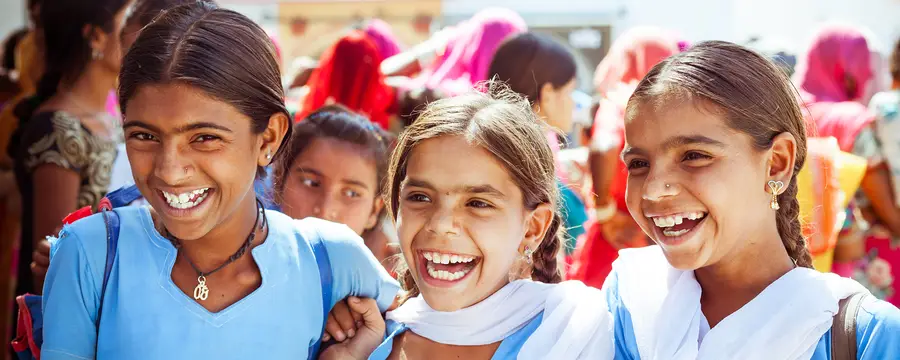Insights
Moving the Needle to Prevent Cervical Cancer

Scaling up the human papillomavirus (HPV) vaccination
Cervical cancer is the fourth most common cancer occurring in women globally, with 90% of deaths caused by cervical cancer occurring in low- and middle-income countries (LMICs). The primary risk factor for cervical cancer is the human papillomavirus (HPV) infection. Cervical cancer is highly preventable, and a safe and effective vaccine to prevent HPV infections has been available for a decade. The HPV vaccine is primarily recommended for girls between the ages of nine and 14 years in two doses or between the ages of 15 and 26 years in three doses.
Despite encouraging evidence on the safety and efficacy of HPV vaccines in preventing HPV-related disease, particularly cervical cancer, scaling up the introduction of HPV vaccination in national immunization programs is a major challenge, particularly in LMICs. Healthcare providers/physicians are key stakeholders in the scale-up of the HPV vaccination, as their recommendation is often the make-or-break point in the decision making at the point of care. Patient-physician communication is a modifiable factor impacting HPV vaccination uptake, and the quality of that conversation, including message clarity, comprehension, and focus on patient-centeredness is something that is not given the attention it deserves.
While some research has focused on understanding and measuring patient-physician communication and successfully demonstrated the resulting increase in uptake of the vaccine, quality of physician communication has not gained traction as a critical approach in the uptake and scale-up of HPV vaccination in countries. It is particularly important to understand how to apply these findings in LMICs, which are resource constrained from a health systems perspective and where people have immense trust in their physician for health-related decision making.
On World Cancer Day, we examine two examples of countries —one that is utilizing patient-physician communication to scale up HPV vaccination, and one that could learn from this approach.
Zambia
Zambia has one of the world’s highest rates of invasive cervical cancer incidence and mortality rates, with cervical cancer accounting for more than one-third of new cancer cases each year in the country. The majority of cases are identified at an advanced stage making treatment difficult. The general population lacks awareness of the prevention of cervical cancer through HPV vaccination and screening, which is one of the major obstacles in making substantive changes to the status quo.
In 2013, Zambia began rolling out a pilot HPV vaccination program in three districts to pave the way for scale-up in rest of the country. Strong political commitment from the First Lady of Zambia along with community outreach efforts were used to engage parents and guardians of adolescent girls to discuss the importance, safety, and effectiveness of the HPV vaccine. Despite these efforts, misinformation about the vaccine spread during the pilot phase of the program, causing concern amongst many parents and guardians regarding its safety.
The government of Zambia began placing emphasis on improving physician knowledge and communication with the parents and guardians of adolescent girls in order to successfully work towards scale-up of the vaccination program to the entire country. Physicians in the public and private sector were educated about the burden of the disease, importance of prevention, preventive vaccine and immunization schedule, and their roles and responsibilities in successfully implementing the scale-up of the program. In order to avoid vaccine refusal, the government placed emphasis on using clear, simple, and accurate messages to educate the public. As of July 2019, the Ministry of Health expressed happiness with the scale-up of the vaccination program and anticipated the number of adolescent girls accessing the vaccine would likely continue to increase.
India
Cervical cancer is the third most common cancer in India and accounts for the second highest number of cancer deaths in the country. Recently, RTI and partners published a policy review in The Lancet on the status of HPV vaccination in India’s cervical cancer prevention efforts, outlining how the states of Punjab and Sikkim successfully introduced HPV vaccination in immunization programs, making a case of scale-up for the entire country. Factors contributing to this success included strong political commitment, the formation of a technical advisory group, local awareness initiatives, adequate resource allocation, vaccine preparedness, efficient inter-sectoral coordination, media support, and committed immunization staff.
Despite this success, barriers to vaccine uptake still persist in the country. In a study recently conducted by RTI to understand the barriers to HPV vaccine uptake for girls, we identified that parents of adolescent girls trust their physicians to make the right decisions for their children's health. However, we found many instances in our study where the physicians were not convinced about the effectiveness and age-specific administration of the vaccine and were therefore not communicating with confidence to their patients about the vaccine. With funding from the American Cancer Society, we developed an HPV Vaccination Factsheet to equip physicians in India with the right knowledge so they can communicate the role of vaccination in preventing cervical cancer to their patients.
We believe that in order to achieve the goals outlined in the World Health Organization’s call to action on eliminating cervical cancer in LMICs, we must tailor communication interventions to the sociocultural and health systems context of each country, and take into account the significant role that physicians play in vaccine uptake.

A male and female doctor talk in a glass-walled hospital walkway.
RTI applies science-based communication interventions aimed at impacting the global burden of noncommunicable diseases (NCDs) such as cervical cancer. We develop innovative, culturally astute communication studies to effectively reduce risk, prevent and improve treatment for NCDs worldwide.
Disclaimer: This piece was written by Ishu Kataria (Senior Public Health Researcher) and Mariam Siddiqui (Public Health Research Associate) to share perspectives on a topic of interest. Expression of opinions within are those of the author or authors.


